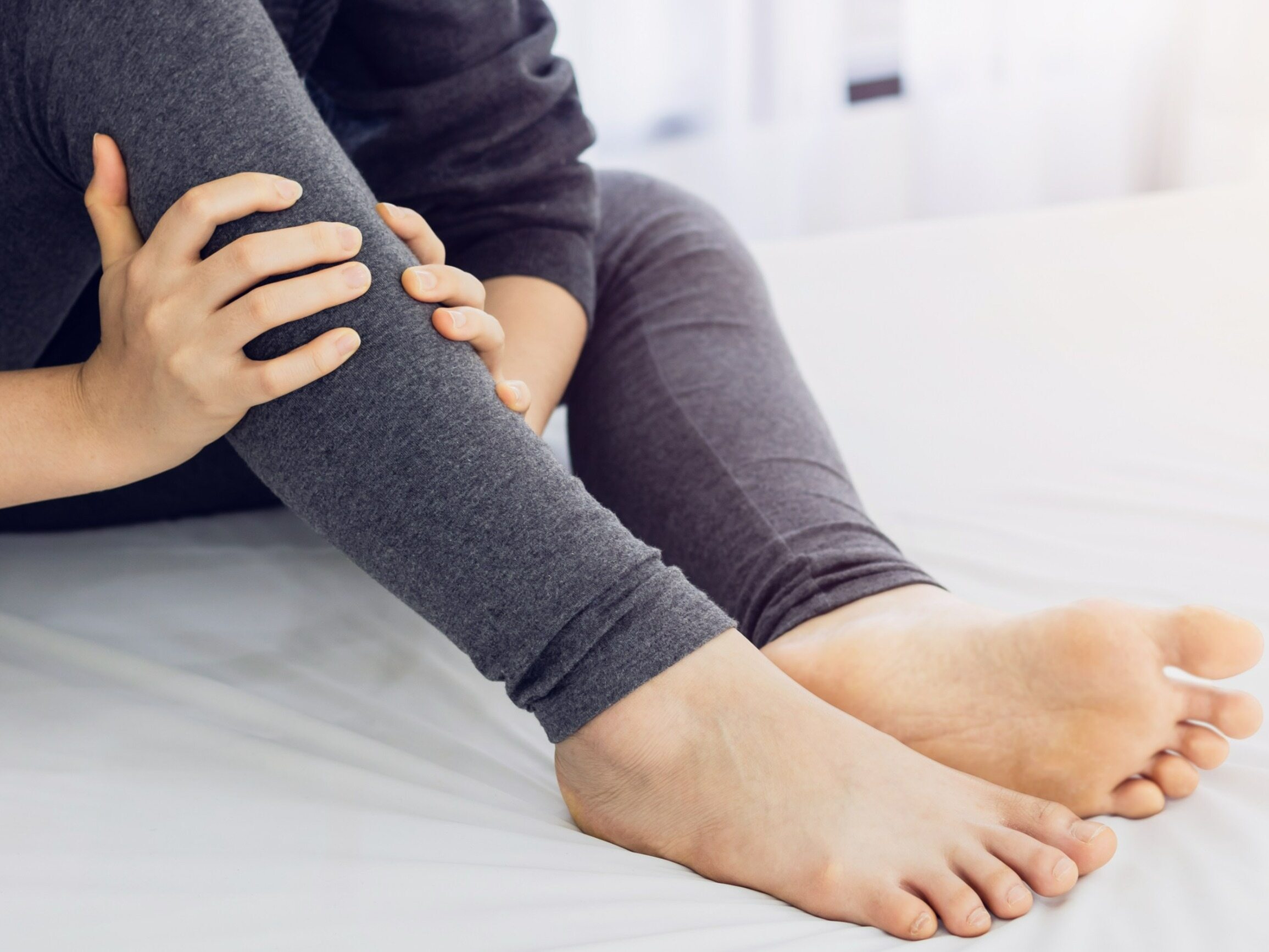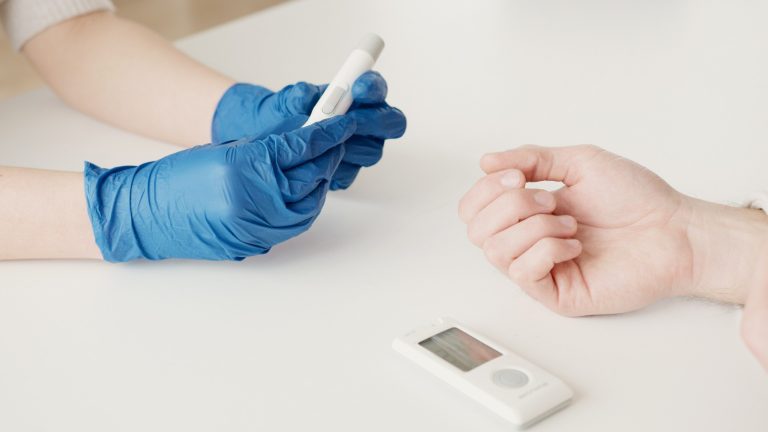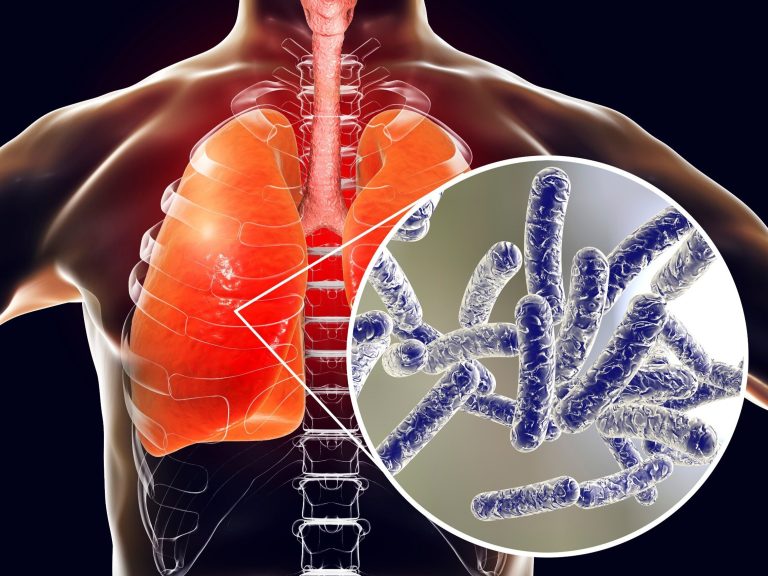Calf pain – most common causes, diagnosis and treatment

Calf pain can be very bothersome and affects people of all ages. In most cases, it is related to overload of the lower limbs, e.g. work or physical activity. However, it sometimes happens that calf pain is the first symptom of a serious disease, so it cannot be underestimated. What causes calf pain? When to see a doctor and what is the treatment like? We explain.
- What is the most common cause of calf pain?
- Calf pain due to viral infections
- Calf pain as a symptom of lower limb ischemia
- Calf pain as a symptom of chronic venous insufficiency
- Calf pain as a symptom of venous thromboembolism
- Calf pain as a symptom of Achilles tendonitis
- Diagnosis and treatment of calf pain
Calf pain or pain in one calf may have various causes. It usually has no underlying disease and is associated with overloading the lower limbs, straining the calf muscles or wearing improperly fitting shoes. You should be concerned about calf pain or calf pain accompanied by other symptoms, e.g. swelling of the limb, painful muscle spasms, redness and excessive warmth of the skin, as well as skin lesions. Diseases that may be indicated by recurrent, worsening or long-lasting calf pain include: chronic venous insufficiency and deep vein thrombosis.
What is the most common cause of calf pain?
Painful calves are a common complaint. Both women and men suffer from calf pain. Calf pain may appear as a “side effect” of work performed in a sitting or standing position, intense physical activity that causes micro-injuries and muscle overload, and may also be related to wearing high-heeled shoes and shoes with a thin, flat sole. . Improperly selected footwear, e.g. for running, can also cause calf pain.
Calf pain may also be related to various diseases. Pain symptoms may indicate, among others, lower limb ischemia, sciatica, water and electrolyte balance disorders, diabetes, Achilles tendonitis, trauma and infection.
Rarely, disease-related calf pain is not accompanied by other symptoms. Symptoms that may accompany calf pain include: calf cramps, tingling in the feet, feeling of heaviness in the legs, excessive muscle tension, change in skin color, skin lesions and flu-like symptoms.
Calf pain can be caused by both minor viral infections and serious diseases of the muscles, bones, joints, blood vessels, skin, and changes in the lumbar-sacral spine, which cause pressure on the nerve roots. For this reason, if you have calf pain, it is always worth seeing a doctor who will find the cause of the troublesome symptoms.
Calf pain due to viral infections
Musculoskeletal pain is one of the first symptoms of seasonal infections. Pain in the calves, back pain, pain in the hands and headache, accompanied by weakness, drowsiness and a feeling of disarray, often precede the occurrence of typical symptoms of infection, including: runny nose and cough. Calf pain is also a symptom that appears in people with high fever. It is worth knowing that pain in the limbs, which appears in the course of colds, flu and other viral diseases, is a desirable symptom that indicates that the immune system is fighting pathogens.
Calf pain as a symptom of lower limb ischemia
Chronic lower limb ischemia is associated with atherosclerotic disease. Calf pain appears in advanced stages of ischemic disease of the lower limbs. Its occurrence is preceded by other symptoms that are related to circulatory disorders and tissue hypoxia. Initially, patients complain, among others: for tingling feet, feeling of cold, painful cramps in the calf muscles and numbness in the legs. As the disease progresses, the so-called intermittent claudication – leg pain appears after walking a certain distance and forces you to stop activity and disappears spontaneously with rest.
Intermittent claudication is a characteristic symptom of arterial disease and related disorders of blood supply and tissue oxygenation. Other symptoms of lower limb ischemia include: sensitivity to temperature changes, muscle atrophy related to ischemia of muscle tissue, change in skin color, non-healing ulcers, and necrotic changes.
Chronic ischemia of the lower limbs is an arterial disease that affects approximately 60% of people over 70 years of age. This disease more often affects men. Factors in the development of chronic ischemia of the lower limbs include: smoking, hypertension, high cholesterol and diabetes.
Calf pain as a symptom of chronic venous insufficiency
Chronic venous insufficiency also presents with calf pain. The disease is associated with damage to the valves. In the course of chronic venous insufficiency, blood stagnation occurs in the venous vessels of the lower limbs. Women are more susceptible to the disease. The first symptoms of the development of chronic venous insufficiency include: spider veins and varicose veins appearing on the legs, as well as a feeling of heavy legs, calf cramps and swelling. Calves pain in the course of chronic venous insufficiency worsens after long periods of sitting and standing.
Calf pain as a symptom of venous thromboembolism
Deep vein thrombosis of the lower limb is a serious disease that is often associated with chronic venous insufficiency and long-term immobilization. Clots that form in blood vessels disrupt blood circulation, making it difficult or impossible to drain it from the limb. The causes of thrombosis are indicated by, among others: increasing calf pain, swelling, redness of the skin and warming of the skin.
Calf pain as a symptom of Achilles tendonitis
Achilles tendonitis can also present with calf pain. The pain in the course of the disease is concentrated in the back of the leg. Characteristic symptoms that accompany calf pain in Achilles tendonitis include limited range of motion and increased pain when pressure is applied.
Calf pain may also be caused by:
-
sciatica, which is associated with, for example, injury and degeneration of the intervertebral disc in the lumbar-sacral spine,
-
electrolyte disorders, which are related to, for example, dehydration, taking certain medications or abusing coffee and alcohol,
-
injury related to training or heavy physical work.
If pain in the lower limb persistently recurs or occurs chronically and is accompanied by other symptoms, you should see a doctor who will make a preliminary diagnosis based on a history and physical examination. Leg pain should not be underestimated! Early diagnosis of the cause of pain allows appropriate treatment to be implemented before serious complications occur.
Diagnosis and treatment of calf pain
If calf pain is accompanied by disease symptoms, it is necessary to perform specialized tests. These include:
-
Arterial ultrasound (a test that allows locating and assessing the extent of vessel occlusion),
-
ultrasound compression test,
-
testing the level of D-dimer in the blood,
-
venography of the veins of the lower limbs,
-
X-ray of the affected limb (examination performed when an injury is suspected),
-
magnetic resonance imaging,
-
computed tomography.
Leg pain in the calves often requires specialized treatment. If diseases related to blood circulation disorders, circulatory failure in the lower limbs or venous thromboembolism are detected, pharmacological treatment (e.g. anticoagulants, anti-inflammatory drugs, drugs improving circulation and drugs strengthening the walls of blood vessels) and lifestyle changes are necessary.
Injuries, contusions and ailments related to overload of the lower limb muscles help to alleviate, among others: cold compresses, painkillers, as well as local analgesic and anti-inflammatory preparations. In some cases, it is necessary to relieve the affected limb and avoid physical exercise.
Leg pain and other musculoskeletal pain associated with infection disappear after a few days and do not require specialized treatment – pain-relieving medications are used (e.g. over-the-counter preparations from the NSAID group – non-steroidal anti-inflammatory drugs).
Sources:
-
Wolska M., Czajka P., Postuła M., Intermittent claudication – the importance of pharmacological and non-pharmacological therapy in chronic treatment, Medycyna Faktów, 14(3)(52), pp. 240-243
-
Szczeklik A., Internal diseases, Volume I, Medycyna Practical Publishing House, Kraków, 2005
-
Szczeklik A., Internal diseases, Volume II, Medycyna Practical Publishing House, Kraków, 2006






